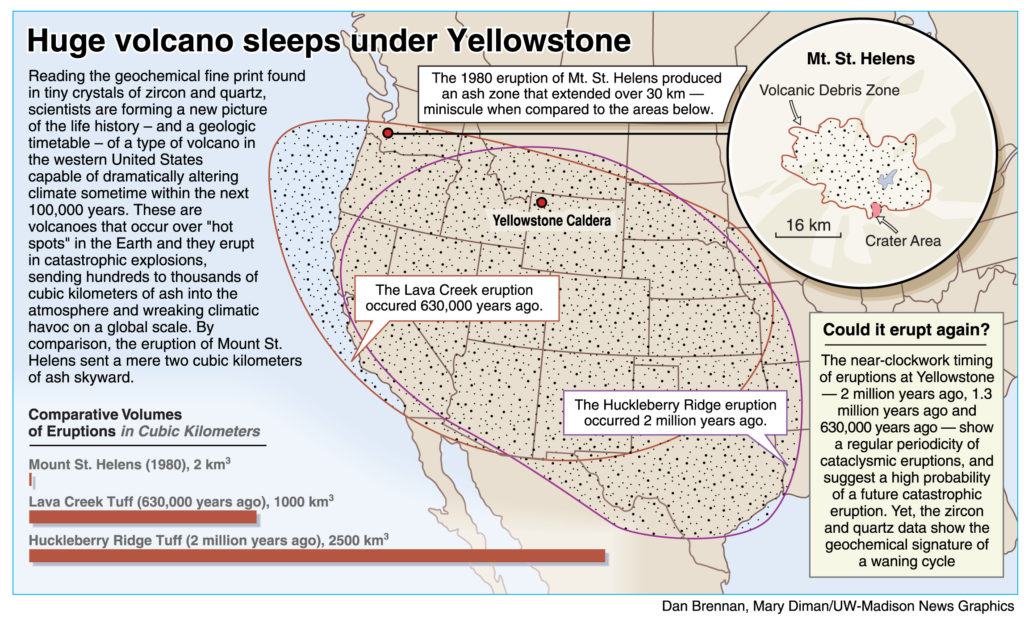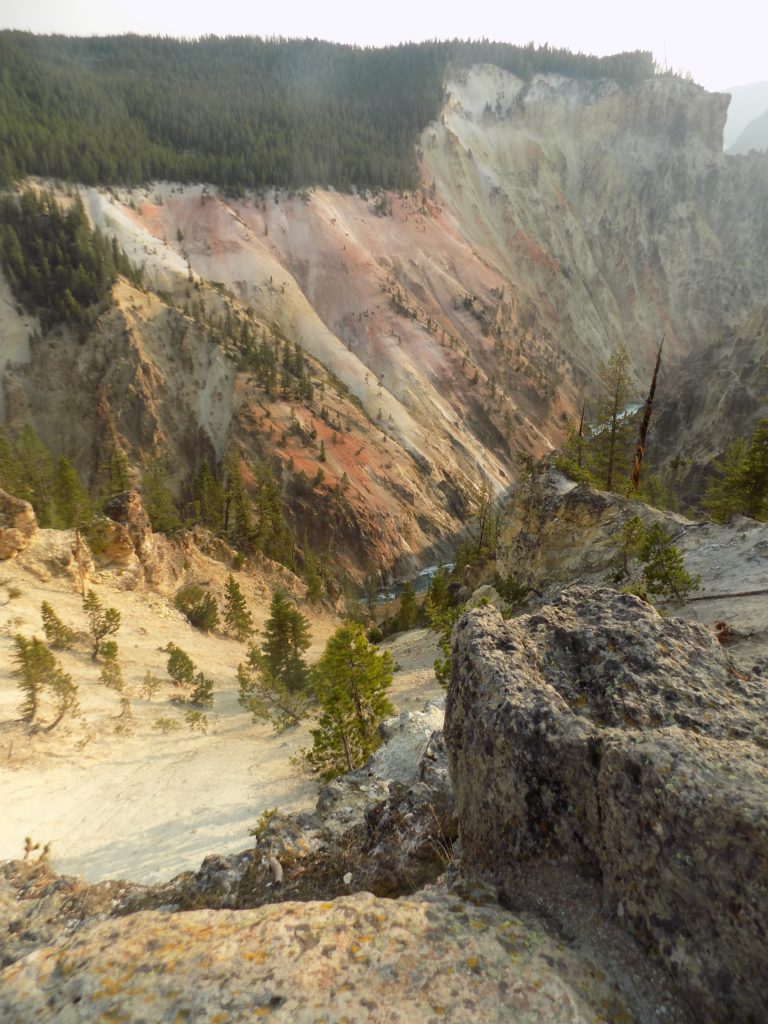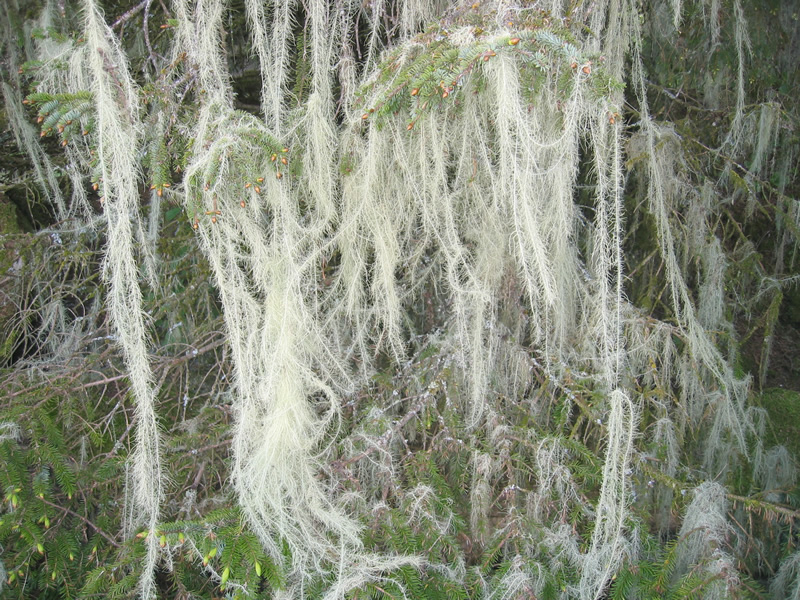Super volcanoes
Those of us of a certain age recall the disruption caused by the eruption of Mount St. Helens in Washington state in 1980. Those who are younger might have to look at the eruption of Iceland’s Eyjafjallajökull in 2010 to remember how a volcanic eruption disrupts human activity. When Mount St. Helens erupted, it ejected about one quarter of a cubic mile of material. Eyjafjallajökull spewed barely more than a fifth of that total. Both the Mount St. Helens and Eyjafjallajökull eruptions had memorable consequences.
Now, let’s take a look at what happened and will, at some future time, happen again at Yellowstone. To help, I’ll reproduce the map of the three previous Yellowstone eruptions that appeared at the end of the previous entry.
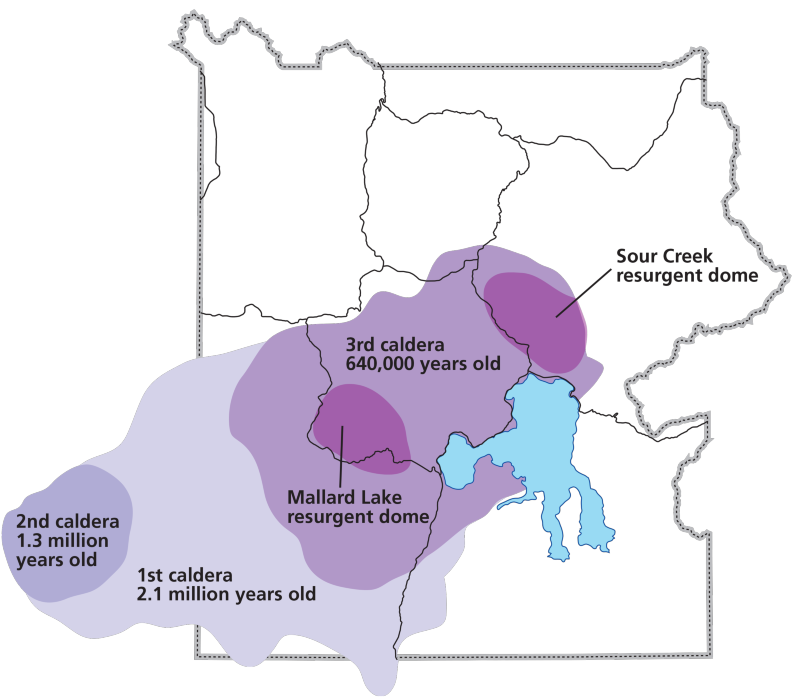
The estimated volume of material ejected the first Yellowstone eruption is 600 cubic miles. Ash from that eruption has been found as far away as Missouri. The second, comparatively puny eruption, occurred within the western edge of the first caldera and ejected a “mere” 67 cubic miles of material. The most recent eruption, some 640,000 years ago, created the Yellowstone Caldera, 30 by 45 miles in size and spat out 240 cubic miles of material. This last number is the minimum necessary for a super volcano and the Yellowstone volcano has hit it twice. (Even the “small” second eruption spewed nearly 268 times as much material than the Mount St. Helens eruption.) A map of the debris from the two super eruptions might look something like this:
Over the past few years, article have appeared in several publications ranging from Newsweek to Business Insider to this one in Live Science where you can read about some of the potentially devastating consequences of such an eruption. Consider yourself forewarned if you do. I take no responsibility for your reaction.
Over time, the pressure from magma has formed two resurgent domes inside the Yellowstone Caldera and magma may be as little as 3–8 miles beneath Sour Creek Dome and 8–12 miles beneath Mallard Lake Dome; they both lift up and subside as magma or hydrothermal fluids upwell or subside beneath them. The entire caldera floor lifts up or subsides, too, but not as much as the domes. In the past century, the net result has been to tilt the caldera floor toward the south. As a result, Yellowstone Lake’s southern shores have subsided and trees stand in water.
The park’s hydrothermal system, containing more than 10,000 thermal features, including the world’s greatest concentration of geysers as well as hot springs, mud pots, and steam vents, is the visible expression of the immense Yellowstone volcano. None of these features would exist without the underlying partially molten magma body that releases tremendous heat.
Now that we’ve taken a look at the tremendous heat that’s burbling throughout the park, we can understand the ease with which the Yellowstone River has carved through such normally hard rock to form the canyon. The rock is being cooked and softened from below the surface and this makes the river’s job much, much easier.
I previously provided an explanation of the yellow color of the canyon walls. The red, as seen in the photo above, is from iron and arises from simple oxidation. That’s right, it’s rusting. You can see more pictures of the GCoY from my morning walk here.
Before we leave the south rim trail, I’d like to tell you a little about the trees you see in the photo(s). While a few of the trees might be limber pines or whitebark pines (both identifiable by their five cluster needle growth) most of the trees you see, whether in the dense forest at the top of the canyon or the widely scattered trees along the canyon walls, are lodgepole pines (so named because Native American tribes of the Rocky Mountain area often used these pines to make the poles of their tipis or lodges). This species, with its two needle clusters, makes up 80 percent of the tree canopy not merely along the canyon but in all of Yellowstone NP.
Lodgepole pines are of particular interest because of the role they play in the park’s appearance. While there are a small number of deciduous species – mainly cottonwood and quaking aspen – in Yellowstone NP, the rest of the forest is comprised of nine conifers -lodgepole pine, whitebark pine, Engelmann spruce, white spruce, subalpine fir, Douglas-fir, Rocky Mountain juniper, common juniper, and limber pine. Since the canopy is almost exclusively comprised of conifers, and from a distance it’s difficult to distinguish one conifer from another, it’s reasonable for you to wonder why I’d make the assertion about lodgepole pines that opens this paragraph.
First, look at the photo above. The trees growing along the canyon wall are lodgepole pines. They are among the few species that grows well in acidic rhyolitic soil. (Remember that the walls of the GCoY are primarily rhyolite.) It’s unlikely that other conifers would take root.
Lodgepole pines, on the other hand, prefer a slightly acidic soil and will grow quickly in mineral soils. They can also grow in conditions ranging from the very wet ground to the very poor soil prevalent within the Yellowstone Caldera providing a flexibility in growth medium that encourages them to flourish. Because, like the cactuses we saw at Organ Pipe NM in Arizona, their roots spread out sideways and do not extend deeply they have another survival advantage in Yellowstone where the topsoil is only about 6 to 12 inches deep. Conversely, their shallow root system makes them vulnerable to high winds so it’s not unusual to see toppled trees as you traverse the park.
The lodgepole pine is also a shade intolerant species so it effectively self-prunes by dropping not only its needles but often its lower branches in heavily forested areas. The low needleless branches allow room for another species to fill that space. This is why walking through the forest you’re likely to encounter lots of trees covered in a gray-black fungus or the lichen known as old man’s beard.
But the main reason the lodgepole pine makes the park look so much like it does can be summed up in two words: serotinous cones. As mentioned above, the species is shade intolerant so the denser the forest, the higher its needles and cones. Like most species, this tree produces both male and female cones. The male cones open annually and spread enormous amounts of yellow pollen throughout the park hoping to find female cones to fertilize.
Unfortunately for the male cones, the female cones are serotinous. That is, they are protected by a seal of pitch that requires extreme heat – such as that generated by a wildfire – to open the cone and release the seeds. The cones can drop unharmed from a substantial height (the trees can grow up to 75 feet tall) and can remain undisturbed on the ground for years until a fire bursts them open. At that point, all the pollen that the male cones have released can do its job and fertilize the released seeds. The fire also clears away the older trees providing sufficient sunlight to establish new growth.
It’s this understanding of the tree’s reproductive cycle that has led the NPS to conclude that naturally occurring wildfires should, in general, no longer be suppressed and that it was just such fire suppression that led to the massive Yellowstone fires of 1988 that affected nearly 800,000 acres or about 36 percent of the park. (I write in general because the NPS will suppress natural fires that threaten people and structures in the park.)
Thus, riding through the park nearly three decades later scenes such as this one
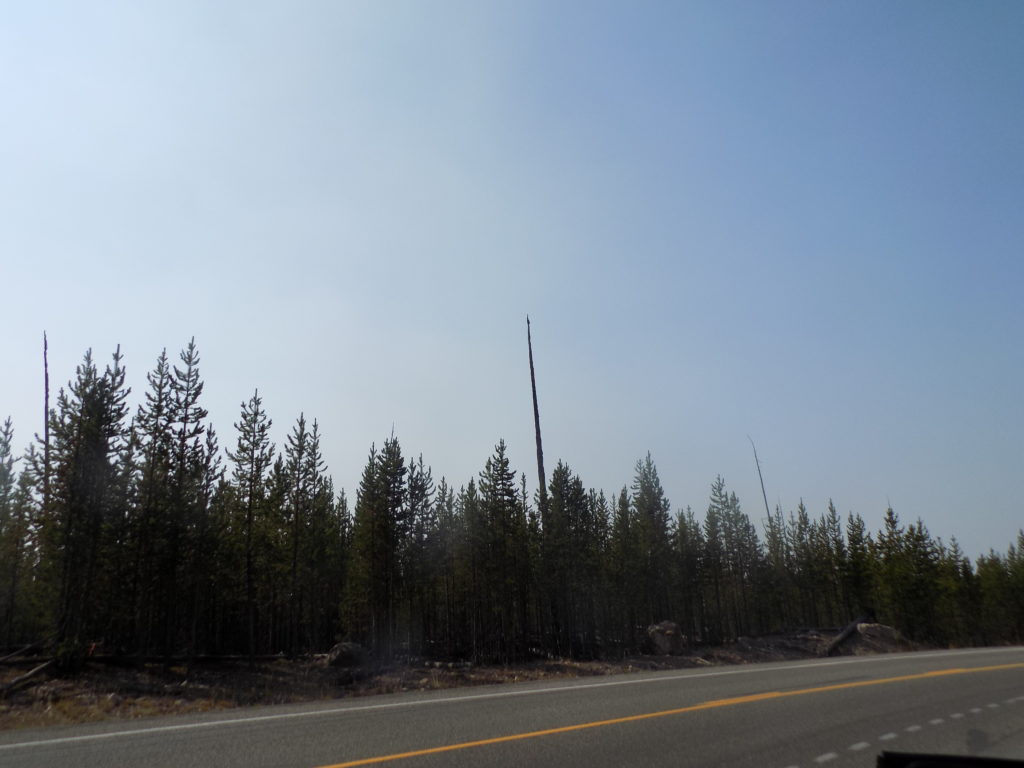 where one can see the masts of dead trees surrounded by newer growth are quite common. Other fire impacted remnants such as the one in the photo of Lewis River are also normal sights. In fact, although I didn’t take any photos when I rode through the park on my way to Heart Mountain, the east side of the park is still widely fire scarred.
where one can see the masts of dead trees surrounded by newer growth are quite common. Other fire impacted remnants such as the one in the photo of Lewis River are also normal sights. In fact, although I didn’t take any photos when I rode through the park on my way to Heart Mountain, the east side of the park is still widely fire scarred.
In upcoming entries I’ll finish this ride south then turn around to drive to the northern and eastern reaches of the park and still will feel as though I’ve missed a lot.
